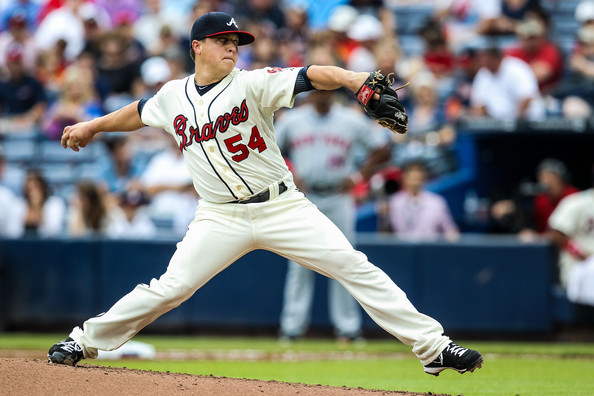
The greatest Brave to wear #54 is pretty easy, but he’s got footsteps coming up behind him- it’s Kris Medlen. A 10th round pick out of Santa Ana College in 2006, Medlen for the most part dominated his way through the minor leagues. From Danville to Rome to Myrtle Beach to Mississippi in 2008, Medlen had success everywhere. Prior to 2009, Baseball America ranked him as Atlanta’s #9 prospect.
Medlen debuted in 2009, pitching mostly out of relief to mediocre results. He started 2010 in the bullpen, but after a good start was moved to the rotation. Overall, Medlen was a little more successful (107.2 Innings, 3.68 ERA, 83 K, 21 BB). Unfortunately, the season ended prematurely with a necessity for elbow surgery. He wouldn’t pitch again until September of 2011, where he got 2 late season innings before the schedule expired.
In 2012, Medlen again started the year in the bullpen, and again was quite good there, posting a 2.48 ERA and a .232/.280/.318 line allowed in 54.1 innings through late July. Like 2010, Medlen again had pitched his way into the starting rotation. As a starter, Medlen put together two of the finest months of pitching Atlanta fans had ever seen. In 12 starts to close the season, he allowed a 0.97 ERA, a .191/.218/.265 line, and struck out 84 in 83.2 innings. Medlen was called on to start the first Wild Card Game in NL history, and he was mostly a good choice – 6.1 innings, 4 hits/walks/hbp, 2 earned runs, and 4 K’s. Unfortunately, Braves defensive miscues (plus the controversial infield fly rule call that ultimately inspired our name here at OFR) put 3 extra runs on the board, and Medlen was saddled with a loss. But the season was a huge success. He finished 20th in the MVP race and set the MLB record for consecutive starts with a win, 23.
In 2013, #54 was a starter all season and was mostly solid. In a career-high 197 innings, Medlen allowed a 3.11 ERA and more or less kept up his peripheral rates from the season before. He went 15-12 and started Game 1 of the NLDS against the Dodgers. After striking out the side in the first inning, Medlen was tagged for 9 hits and 5 runs over the next 3 innings, and both he and the Braves took a Game 1 loss (the Braves would lose that series in the famed game where a warmed up and visibly angry Craig Kimbrel watched from the bullpen as Juan Uribe homered off David Carpenter). During spring training in 2014, Medlen was sidelined with another elbow injury and required another round of surgery. With the 2014 season lost, and Medlen reaching free agency at season’s end, his Braves career was over.
He again made a successful TJS comeback, pitching for the World Champion Kansas City Royals in 2015, now wearing #39. Medlen threw one scoreless inning, striking out two batters, in the Fall Classic win over the Mets. In 6 starts with the 2016 Royals, Medlen was a disaster, allowing a 7.77 ERA and walking 20 batters in 24.1 innings. It was injury-related, and Medlen was DL’d with a shoulder injury. Kansas City turned down his option for ’17 and Medlen became a free agent. He signed a minor league deal to come home to Atlanta, and despite pitching over 100 minor league innings with passable results, Medlen wasn’t asked to help out a moribund big league pitching staff. Again a free agent, Medlen signed a minor league deal with Arizona in advance of the 2018 season.
Honorable Mention: Current Brave Max Fried could claim this spot as early as 2021. As of this writing (ed note: 11/14/2020) Fried is coming off a shortened 2020 season where he almost single-handedly held together the Braves rotation through the pandemic-shortened season, going 7-0 with a 2.25 ERA and finishing 5th in Cy Young Award voting. In parts of four seasons with Atlanta, the lefty owns a 3.52 ERA in 67 games (50 starts).
Who Is the Best Ever To Wear #54?
That would be Hall of Fame reliever Richard Michael “Goose” Gossage, who wore #54 the entirety of his 22-year major league career. Gossage made stops in 9 different cities, but is most known for his 7 years as a New York Yankee where he secured 4 of his 9 All-Star selections and helped the Bronx Bombers win the 1978 World Series.
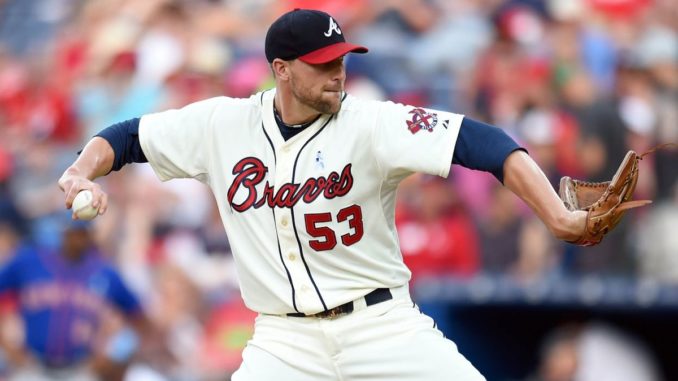
The best Brave to wear #53 was Jim Johnson.
A 5th round prep pick by the Orioles in 2001, Johnson rose through the Orioles system as a pretty successful starting pitcher. After a 2005 season where he went 12-9, 3.35, with 174 Ks in 166.2 innings, Baseball America named Johnson the #8 prospect in the Orioles system. In 2006, he would earn a late promotion straight from AA to the majors, where he made the first and only start of his MLB career (it didn’t go well). He went to AAA for 2007, again as a starter, and once again was called up and pitched in a single big league game, this time as a reliever. In 2008, Johnson made the O’s bullpen and did a nice job keeping runs off the scoreboard, allowing a 2.23 ERA over 68.1 innings and picking up his first save on April 19. From 2009-2011, he would continue to be a reliable middle reliever and occasional closer, posting a 3.31 ERA and 20 saves in 187.1 innings over those three seasons. In 2012, Baltimore called on Johnson to be the full-time closer, and he responded with perhaps his best season: a 2.49 ERA and a league-leading 51 saves en route to his only All-Star appearance, a 7th place Cy Young Award finish, and a 14th place MVP finish. The following season Johnson was nearly as good, allowing a 2.94 ERA on the way to another save title, this time racking up 50. He became only the 2nd MLB reliever in history to save 50 games in back-to-back seasons.
Traded after 2013 in what was seen as a salary dump to Oakland, Johnson struggled immensely to replicate his Baltimore success. After 40.1 innings in which he sported a 7.14 ERA, the A’s released Johnson on August 1. 5 days later, Johnson signed with the Tigers, but had barely better results in Detroit (13 innings, 12 BB, 6.92 ERA). In the following offseason, Johnson signed with Atlanta.
Seen as a lottery ticket reclamation project, Johnson surprised Braves fans in 2015 with competency, posting a 2.25 ERA and 9 saves in 48 innings with the team. A successful veteran reliever serves no purpose on a team trying to lose, as the 2015 Braves were, so he was went to the Dodgers as part of the now infamous Alex Wood – Hector Olivera trade. In LA, Johnson had misleading results (10.12 ERA vs 3.78 DRA thanks to a .446 BABIP), and the Dodgers released him in mid-October. Johnson again signed with Atlanta, and in 2016 had another stellar season – 64.2 innings, 68 Ks, 20 saves, 3.06 ERA. The Braves gave Johnson a 2-year extension, running through 2018, near the end of 2016. In 2017, Johnson regressed a bit. In 56.2 innings, he saved 22 games, striking out batters at a career-high rate (9.7 k/9), but due to an increase in walks and HR allowed, Johnson frustrated Braves fans with blown saves and a 5.56 ERA. While he wasn’t as bad as the ERA suggests, a 4.23 FIP and 3.98 DRA are still somewhat pedestrian numbers for an MLB reliever. After the 2017 season, Atlanta traded Johnson and international signing money to the Angels for Justin Kelly, who is already out of the organization.
Who Is the Best Ever To Wear #53?
Don “Big D” Drysdale wore #53 the entirety of his 14-season Hall of Fame career with the Brooklyn and Los Angeles Dodgers. Drysdale, alongside fellow HoFer Sandy Koufax, pitched the Dodgers to five World Series appearances, winning in 1959, 1963, and 1965.
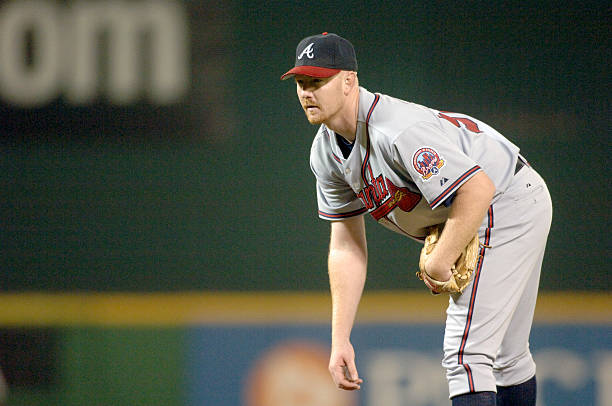
The greatest Brave to wear #52 is John Thomson.
A 7th round pick in 1993 out of Blinn College (Blinn is more famous for being Cam Newton’s 2nd of his 3 college football stops, between Florida and Auburn), Thomson rose through the Rockies system as a starting pitcher who appeared on Baseball America’s Top 10 for the Colorado system in both 1995 (#7) and 1997 (#9). In 1997, Thomson got a full season MLB debut, starting 27 games for the Rockies. A 4.71 ERA isn’t great on the surface, but for a rookie pitcher in Colorado in the era of record offense, that’s actually a pretty encouraging debut. Thomson regressed as a sophomore, as sophomores sometimes do, allowing a 4.81 ERA in 1998 as he was less adept at keeping the ball on the ground. 1999 was a nightmare season: a 1-10 record, more walks than strikeouts, and a ghastly 8.04 ERA. In the offseason, the team found that Thomson had been pitching with a torn labrum, which explains the sudden collapse. Thomson mostly sat out 2000 in rehabilitation, aside from a few low minors appearances just to get him back on a mound. Thomson started 2001 in AAA and looked good enough (3.31 ERA in Colorado Springs) to earn him a trip back to the bigs. Upon his return to the Rockies, Thomson was the best he’d been in his career. He allowed a 4.04 ERA and posted the best K and BB rates of his career so far. In 2002, Thomson was again reliable for the Rockies – a 4.88 ERA over 127.1 innings wasn’t going to win any awards, but in Colorado, it kept you competitive. On July 31, the 48-59 Rockies, 17 games out, traded Thomson and a bench player to the Mets for minor league slugger Rob Stratton (Stratton wouldn’t reach the majors, but would hit 197 MiLB HR, including 118 from 2000-2003), Mark Corey, and Jay Payton. It was a baffling trade for the Mets, considering Thomson was an impending free agent and Payton had a year of team control remaining, a year which saw a really helpful season from Payton in Denver. Thomson was mildly successful in NY, with a 4.31 ERA over 9 starts, but the Mets went 20-35 after the trade and missed the playoffs.
Thomson signed a one year deal with Texas, where in 2003 he pitched a career-high 217 innings. His 4.85 ERA may have signaled more of the same, but peripheral stats (4.06 DRA, 4.19 FIP) suggested improvement. Atlanta signed Thomson to a 2 year, $6.5M deal which included a club option for 2006 at $4.75M.
Thomson’s first year in Atlanta was easily his best. He went 14-8 with a 3.72 ERA over 198.1 innings. Thomson made his first postseason start that year, but if you weren’t punctual with your viewing, you missed it. After just 8 pitches in the first inning, Thomson left the Houston mound with a strained side muscle. Atlanta’s bullpen would go on to lose the game, pivotal in a 5-game series. In 2005, Thomson struggled with blisters which affected his consistency, but he still wasn’t terrible, going 4-6 with a 4.47 ERA over 98.2 innings. Despite the blisters, Atlanta picked up Thomson’s 2006 option. The blisters sadly returned, and what would later turn out to be another labrum injury plagued Thomson’s season. He went 2-7 with a 4.82 ERA in 80.1 innings of work. This concluded his career in Atlanta.
In 2007, Thomson signed with the Blue Jays, but was cut in spring training after more shoulder issues arose. He signed with Kansas City and worked his way back to the majors, even making 2 final MLB starts, but went unsigned in the next offseason. The stigma of shoulder injuries are hard to shake.
Who Is the Best Ever To Wear #52?
Big left-hander CC Sabathia pitched all of his 19-year major league career as #52. A six-time All-Star and 2007 Cy Young Award winner for Cleveland, Sabathia pitched to a 3.74 ERA and a 251-161 record and is on the shortlist (along with Justin Verlander and Clayton Kershaw) for greatest 21-century pitchers to date.

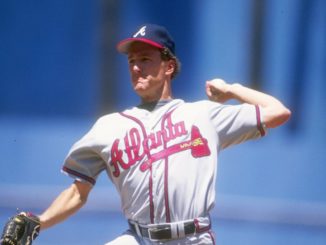
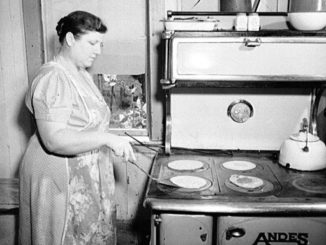
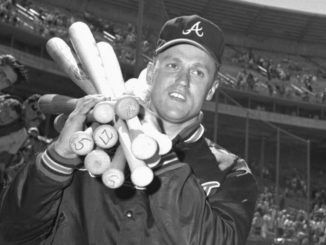
Leave a Reply